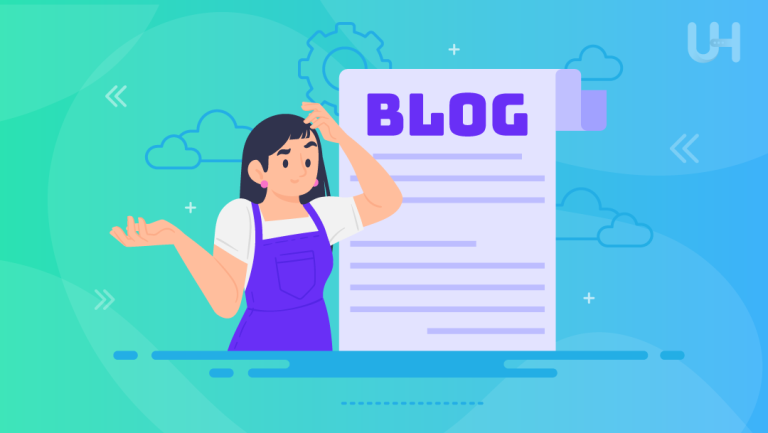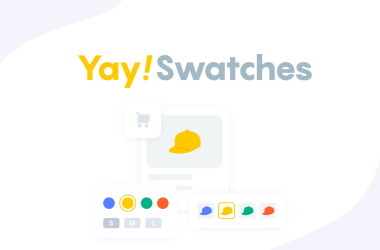Are you frustrated because no one is reading your blog? After working long hours researching, writing, and editing, it’s depressing when no one seems to care about your efforts. Without readership and engagement, the most beautiful page of a blog very soon becomes a hidden treasure. When people don’t engage with your posts, it is not just about the lack of traffic but rather your hard work that cannot reach its potential. As a blogger, trying to capture your attention and maintain value is essential so that the audience comes for more. If you are still thinking of what might be the reason no one reads your blog, you are not alone. Most bloggers face this challenge at some point in their blogging journey.
In this post, we will explore key reasons why no one is reading your blog. We will also discuss practical ways to fix these issues and help you get more readers for your blogs.
Your Blog Title Isn’t Engaging
Your blog post title is among the first things readers are going to see, and it is very important because it determines whether or not they will click to read more. If it fails to capture attention or even interest the reader, they will pass through without even giving it a second glance. A weak or vague title can result in low click-through rates even with very valuable content. What does your blog title represent? In short, it is the hook that draws readers into your content. If the hook is not tight, readers will never get a glimpse of the quality of information that you have written. If no one is reading your blog, it might lack an engaging and catchy title.
Solution: Create Catchy, Value-Driven Blog Titles
To create attention-grabbing blog titles, focus on what your readers care about most. Ask yourself: What problem does my post solve? What benefit does the reader get from reading this? Highlight the value in your title. Powerful, clear titles inform readers of precisely what they will get out of clicking on a link. The use of emotional triggers and appeals to the reader’s curiosity helps build interest. Keep the title specific yet interesting, avoiding the blanket and being too vague/generic.
Actionable Tip: Use Power Words and Numbers
You can increase your click-through rate with powerful words and numbers in the titles. Words such as “ultimate,” “essential,” “easy,” and “proven” are instantly attention-grabbing. Moreover, including numbers helps in setting expectations and adds clarity to the value of your content. For instance, “5 Proven Ways to Increase Blog Traffic” is specific, promises an actionable tip, and makes the content feel digestible. In general, titles that include numbers attract more clicks because readers know just what they are getting themselves into.
These strategies can thus significantly enhance your title and make it more effective. Value-driven title, impressive and convincing will have readers clicking on your link and to your content.
Your Content Doesn’t Address Reader Pain Points
If your content doesn’t address your reader’s point of view or deliver clear value, they will leave in a hurry. Readers want solutions to their problems: learning something new, getting advice, or solving an issue that’s associated with a current problem. If it does not, readers will look for the next article that best answers their questions. Know the challenges of your audience to craft the types of posts that resonate with them.
Solution: Emphasis on Audience Needs and Questions
Put yourself in the readers’ shoes and discover what is bothering them. Understand the common problems, challenges, or issues that your readers are facing. Then, consider what are their goals, desires, and frustrations and tailor the content to target this head-on. With solutions or useful information, you bring information value, and your blog becomes not only informative but truly helpful. The point when the content answers a question or solves a problem will make a reader peruse further and come back for more.
Actionable Tip: Use Tools to Identify Common Concerns
Use Keyword research tools, Answer the Public, or forums like Reddit to better understand what your audience wants. These platforms identify questions being asked by people and trending topics. You can accordingly formulate your blog to address common concerns and frequently searched keywords that come your way. If you find that many people are struggling with “time management for entrepreneurs”, then create content around that topic with actionable advice.
You will be focusing on readers’ focus points and using the right tools to identify their needs. This way, your content is both relevant and valuable, and you can build a blog website using a secure WP hosting server which creates a stronger connection with your audience, making them come back for more.
Your Post Is too Long or too Short
The right word count for the blog is vital in keeping the readers interested. Long posts will confuse the reader, making it harder to focus. Conversely, if your posts are too short, they will not offer enough value or specifics that will keep the reader glued to the content. This can lead to a lower engagement rate and an increased bounce rate. An optimal blog length will keep your content rich yet light on the reader’s end. Most classic blogs had long-form content for detailed study on a particular subject.
Solution: Tailor Blog Post Length to Keep the Audience Interested
Blog post length will vary depending on the subject, audience, and goal. In general, length seems best between 1,000 and 2,000 words, as this provides sufficient detail for the reader without overwhelming him or her with too much information. A long post can delve into the subject deeply, providing rich details, whereas shorter versions might not provide the same depth. Rather than focus on the word count, focus on the quality and relevance of the content. If the topic needs more explanation, it is okay to go a little longer; however, always ensure the content remains engaging and useful.
How-To Tip: Break Long Posts into Digestible Sections
If your blog post is longer, make it easier for readers to follow by breaking it into digestible sections. Use subheadings to break up your content into more organized thoughts that are easy on the eyes. This makes the post scannable. For example, instead of a wall of text, separate key points with relevant headings, bullet points, and visuals. Readers can then start skimming through it and focus on what interests them most. Use short paragraphs and whitespace rather than keeping too many words on the page.
Thereby, the readers will be glued from the beginning to the end of your subject posting is well-balanced and organized appropriately. This not only enhances their experience but also invites them to visit for more well-structured and value-packed content.
Ready to Boost Your Blog’s Readership?
Take the first step toward a successful blog by resolving the issues holding you back. Visit Ultahost Blog Hosting to discover reliable hosting solutions designed for better speed, performance, and engagement. Start optimizing your blog today!
Your Blog Is Not Search Engine Optimized (SEO)
Poor SEO could be a key reason why no one is reading your blog. Without proper SEO, your blog won’t show up in search engine results, limiting your visibility and readership. Even if you create high-quality content, it won’t reach your target audience if search engines can’t find it. SEO ensures that your blog ranks higher in search results, making it easier for readers to discover your content. Without SEO, your blog might remain buried under countless other articles that are optimized for search engines.
Solution: Focus on On-Page SEO
To improve your blog’s visibility, focus on on-page SEO. This involves optimizing various elements within your blog post to make it more search-engine-friendly. Start with keyword optimization. Use relevant keywords naturally throughout your content, including in your title, headings, and body text. In addition to keywords, optimize your meta descriptions, which summarize the content of your blog post for search engines and readers. Alt text for images is another crucial component; it helps search engines understand what your images are about, improving your SEO further. For effective content optimization, use SEO writing tips for content optimization that can boost your blog’s visibility and attract more traffic.
Actionable Tip: Strategically Incorporate Keywords
Strategically incorporate keywords. Don’t overstuff your content with keywords, but include them where they make sense. Place them in key positions, such as your blog title, subheadings, and URL, and within the first 100 words. Also, aim to create a natural flow of content, so readers aren’t distracted by awkward keyword placement. By strategically using these keywords, you help search engines understand your content and make it easier for your target audience to find your blog.
By optimizing your blog for search engines, you improve its chances of ranking higher in search results. This will not only increase your blog’s visibility but also help you attract more readers and improve engagement.

Poor Visual Appeal
Unattractive layouts or a lack of visuals can quickly turn readers away. If your blog looks cluttered or is difficult to navigate, readers may abandon it before engaging with your content. A visually appealing blog helps capture attention and keeps readers interested. Without proper formatting, readers may feel overwhelmed, leading to a poor experience and lower engagement rates. Investing in design and visuals is just as important as the quality of your content.
Solution: Use Engaging Images and Proper Formatting
To improve your blog’s visual appeal, start by using high-quality images and proper formatting. Break your text into manageable chunks with clear headings and subheadings. This will make it easier for readers to skim and find key information. Incorporate white space to avoid overcrowding and give your content room to breathe. This makes your blog look more organized and inviting. By creating a clean layout, you provide a better reading experience, encouraging visitors to stay longer.
Actionable Tip: Add Relevant Images, Infographics, or Videos
In addition to formatting, add relevant images, infographics, or videos to enhance your content. Visual elements not only make the blog more interesting but also help simply explain complex topics. Infographics are especially useful for summarizing data or processes, making it easier for readers to grasp key points. Videos can offer deeper engagement, giving your readers a more interactive experience. Always ensure that your visuals are relevant to your content and support the message you’re conveying.
By improving the visual appeal of your blog, you create a more engaging environment for readers. A clean, visually appealing layout with the right mix of images and formatting keeps readers engaged and more likely to return.
Lack of Consistency in Posting
Inconsistent posting schedules could be why no one is reading your blog regularly. Inconsistent posting schedules can cause readers to lose interest and forget about your blog. When there is a gap between posts, readers may wonder if you are still active or if the blog is no longer maintained. Consistency is key to keeping your audience engaged. Regular posting builds anticipation, and when readers know when to expect new content, they are more likely to return. Without a reliable posting schedule, your blog risks fading into obscurity.
Solution: Create and Stick to a Content Calendar
To maintain consistency, create a content calendar. A content calendar helps you plan and organize your posts in advance, ensuring that you always have content ready to go. It also helps you stay on track with your goals and deadlines. By scheduling posts in advance, you can keep your blog active and ensure that you’re posting regularly. This approach removes the guesswork from when to publish, making it easier to stay consistent over time.
Actionable Tip: Post at Least Once a Week
Aim to post at least once a week, or more frequently if possible. Weekly posts keep your blog fresh and help you stay top of mind with your audience. If you can manage more frequent posts, even better. However, consistency is more important than quantity. Posting regularly, even if it’s once a week, is better than sporadic updates. By committing to a set schedule, you will not only keep your audience engaged but also improve your SEO rankings by having fresh content on your blog.
Consistency is a powerful tool for building a loyal readership. By sticking to a content calendar and posting regularly, you keep your audience engaged and your blog relevant.
You’re Not Promoting Your Blog
A lack of promotion often results in situations where no one is reading your blog. Posting a blog is only the first step; you need to actively promote it to increase organic traffic. Without promotion, even the best blog posts can go unnoticed. Simply relying on organic traffic through search engines isn’t enough, especially when you’re just starting. If you’re not promoting your content, you’re missing out on a significant opportunity to grow your readership. Promoting your blog is crucial for getting it in front of the right audience and increasing engagement.
To promote your blog effectively, use various channels such as social media marketing channels, email newsletters, and influencer marketing. Sharing your blog on social media platforms like Twitter, Instagram, and LinkedIn helps you reach a broader audience. Each platform offers different opportunities to engage with potential readers. Additionally, sending your blog via newsletters allows you to directly connect with subscribers who are interested in your content. Collaborating with influencers in your niche can also expand your reach, as they can help introduce your blog to their followers. As social media evolved with micro-influencers and nano-influencers, users began to drift to places where they could easily share short messages with an impact, hooking them into real-time engagement and connectivity.
Social media platforms like Twitter, Instagram, and LinkedIn are great tools for promoting your blog. On Twitter, share snippets of your blog post with a compelling call to action to encourage clicks. On Instagram, use engaging visuals along with your blog link in the bio or stories to attract readers. LinkedIn is ideal for sharing professional content and engaging with a business-focused audience. Be sure to post regularly and interact with your followers to build a community around your blog. Additionally, don’t hesitate to join relevant groups and forums to share your posts with like-minded individuals.
By promoting your blog through various channels, you significantly increase its visibility and attract more readers. Actively sharing your content on social media, newsletters, and through influencer partnerships helps you build an engaged audience and grow your blog’s reach.
Your Blog Lacks a Clear Call to Action (CTA)
No one is reading your blog if it lacks clear calls to action or engaging CTAs. Without a clear call to action (CTA), readers might not know what to do next after finishing your post. A CTA guides readers toward taking the next step, whether it’s leaving a comment, sharing the post, or subscribing to your newsletter. If your blog doesn’t have a CTA, it can lead to missed opportunities for further engagement. Readers might leave your site without interacting, which reduces the chances of building a loyal audience or encouraging them to return.
Solution: Include CTAs that Encourage Further Engagement
To keep your audience engaged, include clear and actionable CTAs throughout your blog. A good CTA gives readers a sense of direction and a reason to continue engaging with your content. It can encourage readers to comment on the post, share it on social media, or explore more of your blog. By prompting action, you turn passive readers into active participants, building a relationship and fostering loyalty. CTAs should be compelling and specific, focusing on what you want the reader to do next.
A simple and effective way to boost engagement is by offering value through CTAs like “Download our free guide” or “Join our newsletter for updates.” These types of CTAs offer something tangible in exchange for the reader’s action. A free guide, for example, provides extra value and can entice readers to stay connected with your blog. Similarly, inviting readers to subscribe to your newsletter keeps them updated with your latest posts and builds an ongoing relationship. Ensure your CTAs are placed in visible spots, such as at the end of the post or in a pop-up, to make them easy for readers to find.
Including clear and engaging CTAs encourages your readers to take the next step. Whether it’s sharing your post, commenting, or subscribing, CTAs can help increase interaction and build a loyal readership.
Want to Attract More Readers to Your Blog?
Enhance your blog’s visibility and engagement with SEO-focused VPS hosting. Visit Ultahost SEO VPS for fast, optimized hosting solutions tailored to improve your blog’s performance and search engine rankings. Take your blog to the next level today!
Your Blog Is Not Mobile-Friendly
No one is reading your blog if it isn’t mobile-friendly or visually appealing. Many readers browse blogs on mobile devices, and if your blog isn’t mobile-optimized, they may leave quickly. A website that isn’t mobile-friendly can be frustrating to navigate, causing users to abandon your site before engaging with your content. If your blog isn’t responsive and adaptable to various screen sizes, you risk losing a large portion of your potential audience. Since mobile traffic continues to rise, having a mobile-friendly blog is no longer optional but a necessity for retaining visitors.
Solution: Ensure Your Blog Is Responsive
To ensure your blog works well on smartphones and tablets, make it responsive. A responsive design automatically adjusts to different screen sizes, ensuring that your blog looks good and functions properly on any device. This includes adjusting images, text, and navigation to fit mobile screens without distorting or cutting off content. A responsive blog provides a seamless experience for readers, whether they’re using a desktop, smartphone, or tablet. By optimizing for mobile, you improve both user experience and your chances of higher engagement.
Actionable Tip: Test Your Site on Various Devices
It’s essential to test your blog on different devices to ensure proper functionality. Use tools like Google’s Mobile-Friendly Test to check how well your site performs on mobile devices. Manually check your blog on various smartphones and tablets to ensure it loads quickly, the text is readable, and the images are displayed correctly. Also, test the navigation and ensure all buttons and links work as expected. By proactively checking your blog’s mobile performance, you can spot and fix any issues before they affect your readers.
Optimizing your blog for mobile devices ensures that you don’t miss out on a significant portion of your audience. A responsive design not only enhances user experience but also boosts your blog’s credibility and engagement.

You Don’t Engage With Your Audience
Ignoring comments and feedback can result in a lack of connection with your readers. When readers take the time to comment or engage with your content, they expect a response. Failing to interact with your audience can make them feel unappreciated and may lead to lower engagement levels. Building a relationship with your readers is crucial for fostering a loyal community. If you’re not engaging, you miss the opportunity to create meaningful connections that keep readers coming back. Promote your content actively, or you’ll continue wondering why no one is reading your blog.
To build a loyal following, take the time to respond to comments and engage with your audience on social media. When you acknowledge and reply to readers’ comments, you show that you value their input. This creates a sense of community and encourages further interaction. Engaging on social media platforms allows you to reach a wider audience, answer questions, and start conversations that extend beyond your blog. Building these relationships helps turn casual readers into loyal followers who feel connected to your content.
Actionable Tip: Set Aside Time to Respond to Comments
Set aside time each day to respond to readers’ comments on your blog and social media. Consistency is key—make it a routine to reply to comments within 24 hours, showing your readers that you are active and engaged. Whether you’re thanking them for their feedback, answering questions, or joining discussions, regular interaction keeps your audience engaged. Additionally, consider encouraging comments by asking questions or prompting feedback within your blog posts. This makes it easier for readers to contribute and boosts overall engagement.
Engaging with your audience helps you build stronger relationships and increase blog loyalty. By responding to comments and interacting on social media, you show your readers that you care and value their input. This leads to higher engagement and a more dedicated readership.
Establishing authority is crucial, or no one is reading your blog for credibility. Readers are more likely to return to blogs from trusted and authoritative sources. Without establishing authority, your audience may question the reliability of your content and choose to visit other blogs. Trust plays a crucial role in building a loyal readership. If your blog lacks credibility, readers will hesitate to engage with your content or share it with others. Establishing yourself as an expert in your niche is essential to growing your blog and encouraging repeat visits. For example, you can elevate your blogging journey by choosing a unique and memorable domain with the Ultahost .blog domain.
Solution: Showcase Expertise and Provide Accurate Information
To build trust, you need to showcase your expertise and provide accurate, well-researched information. Make sure your content is thorough, fact-checked, and relevant to your audience’s needs. Demonstrating knowledge in your field helps position you as a credible and authoritative source. Additionally, reference credible sources and link to reputable websites to back up your claims. When your readers see that your information is reliable, they will trust your content and keep coming back for more.
One effective way to establish credibility is by sharing case studies, testimonials, or examples of your own experiences. Case studies provide real-life evidence that your advice or recommendations work. Testimonials from satisfied clients or readers reinforce trust in your expertise. Personal experiences make your content more relatable and humanize your blog, creating a connection with your audience. Including these elements not only supports your authority but also helps to build stronger, more genuine relationships with your readers.
By establishing authority and trust, you show your readers that your content is valuable and reliable. Sharing expert knowledge, using credible sources, and showcasing real-world examples help you build credibility. This encourages readers to trust your blog, engage with your content, and become loyal followers.
Conclusion
These 11 reasons why no one is reading your blog highlight key areas for improvement. From crafting compelling titles and addressing reader pain points to optimizing your content and promoting it effectively, each step is crucial for building an engaged audience. Additionally, ensuring your blog is mobile-friendly, engaging with readers, and establishing authority will help you retain and grow your readership. By consistently improving these strategies, you can boost your blog’s visibility and foster a loyal following. Take action now to resolve these issues and watch your blog’s readership grow.
For faster load times and seamless performance, explore Ultahost Fast WP Hosting. A fast and reliable hosting solution can make all the difference in your blog’s success. Start optimizing your blog today!
FAQ
Why is no one reading my blog?
Your blog might lack compelling titles, proper promotion, or SEO optimization, which are essential to attract readers.
What are the main reasons no one is reading your blog?
Key reasons include poor promotion, irrelevant content, weak CTAs, and a lack of audience engagement.
How can I get more blog readers quickly?
Promote your blog on social media, optimize for SEO, and address reader pain points to attract more visitors.
Why is a call to action important for blog engagement?
A clear CTA guides readers on what to do next, boosting interaction and keeping them engaged with your content.
How does mobile optimization improve blog engagement?
A mobile-friendly design ensures a better user experience, reducing bounce rates and increasing readership.
What can I do to improve blog engagement?
Focus on creating valuable content, responding to comments, and using visuals to make your blog interactive.
Why should I use social media to promote my blog?
Social media expands your reach, connects with a wider audience, and drives traffic to your blog.















